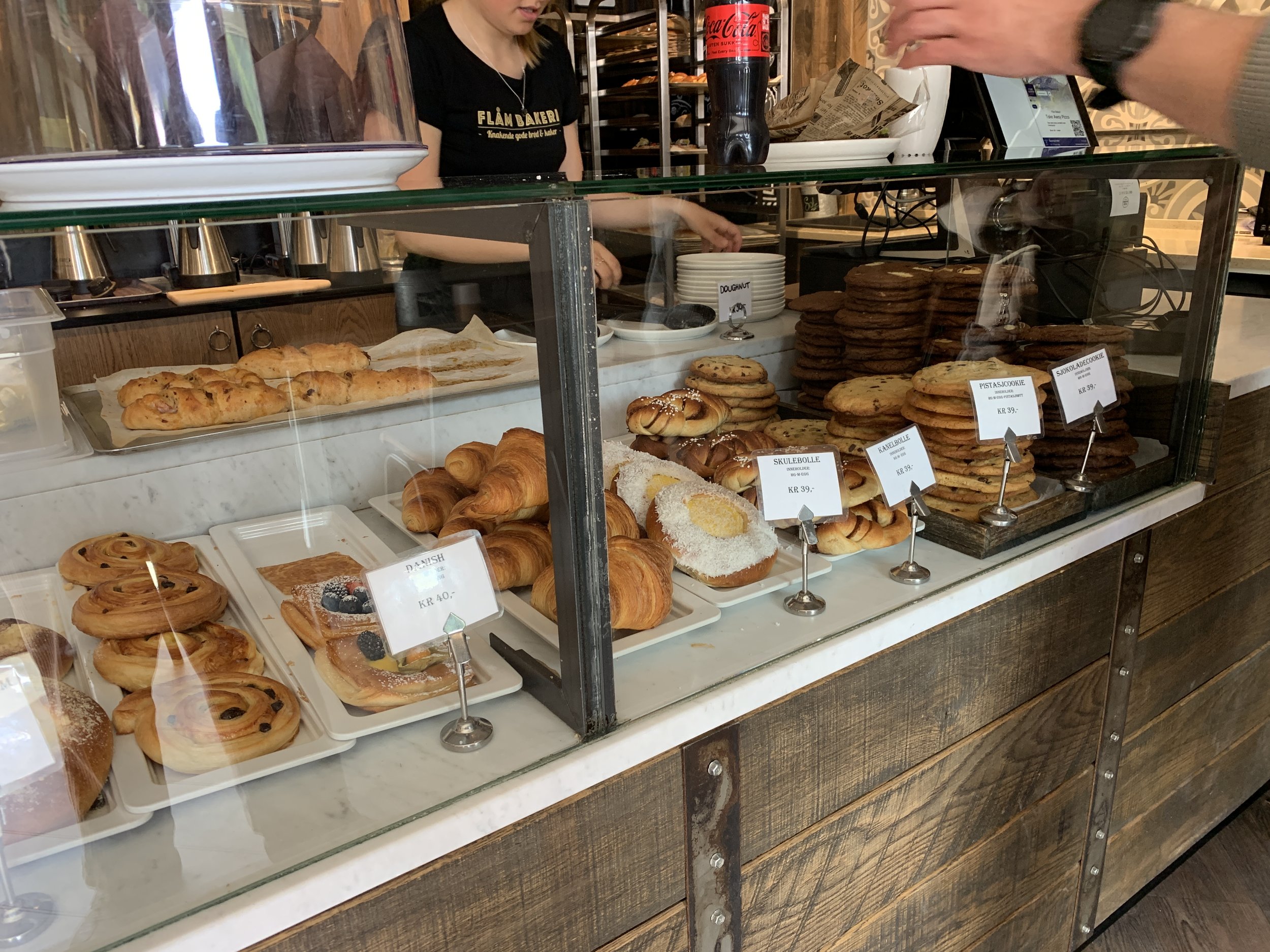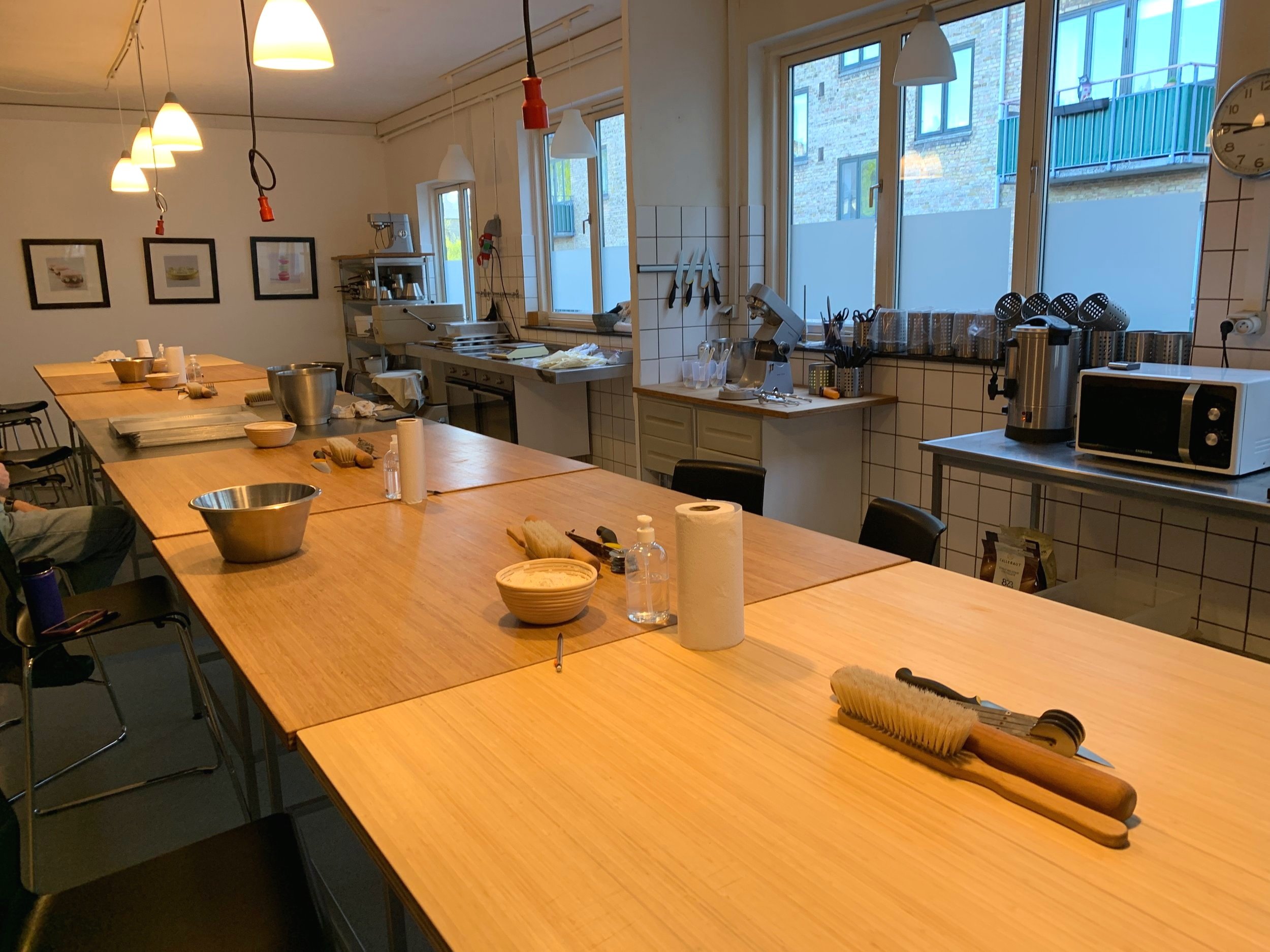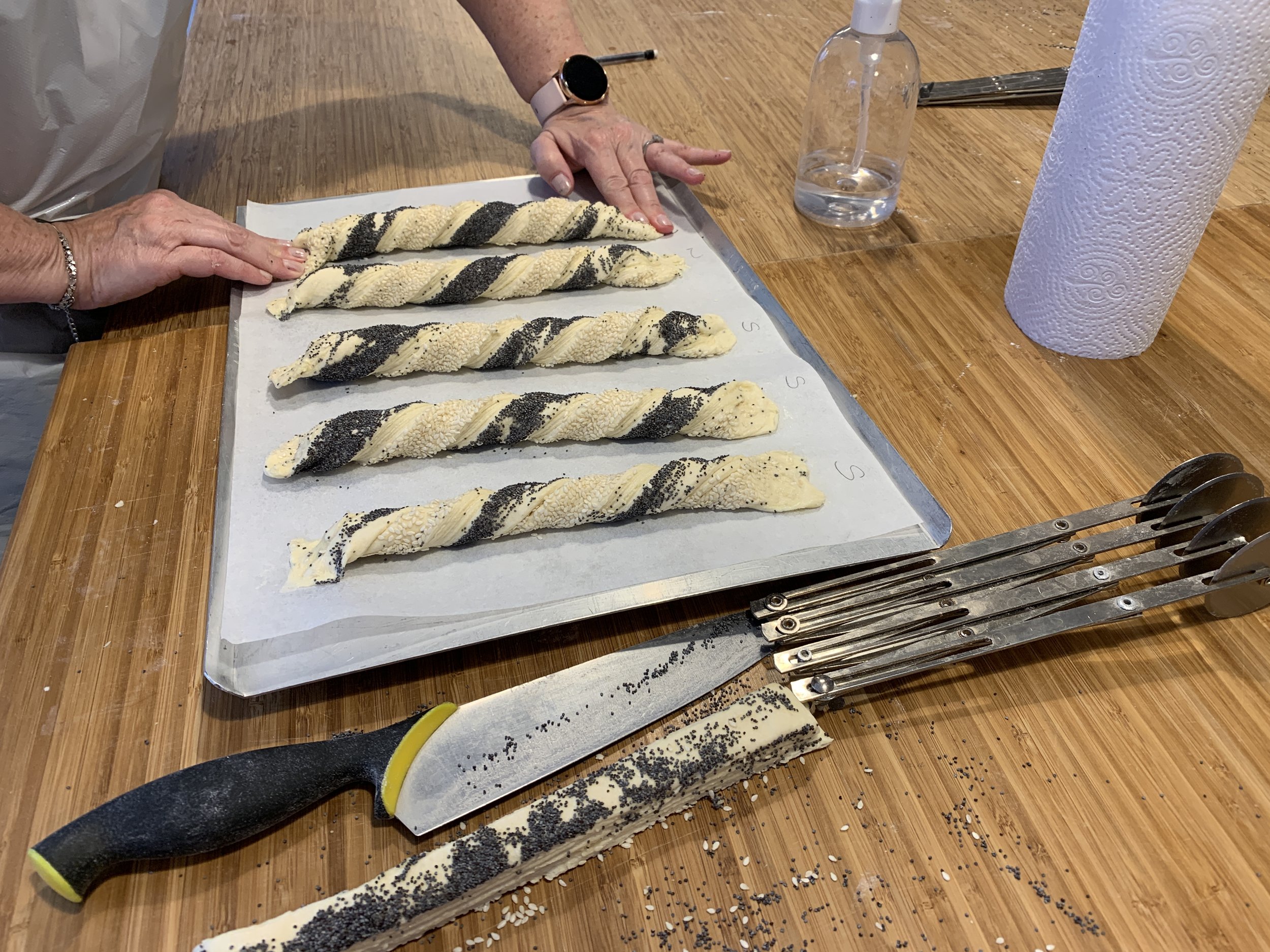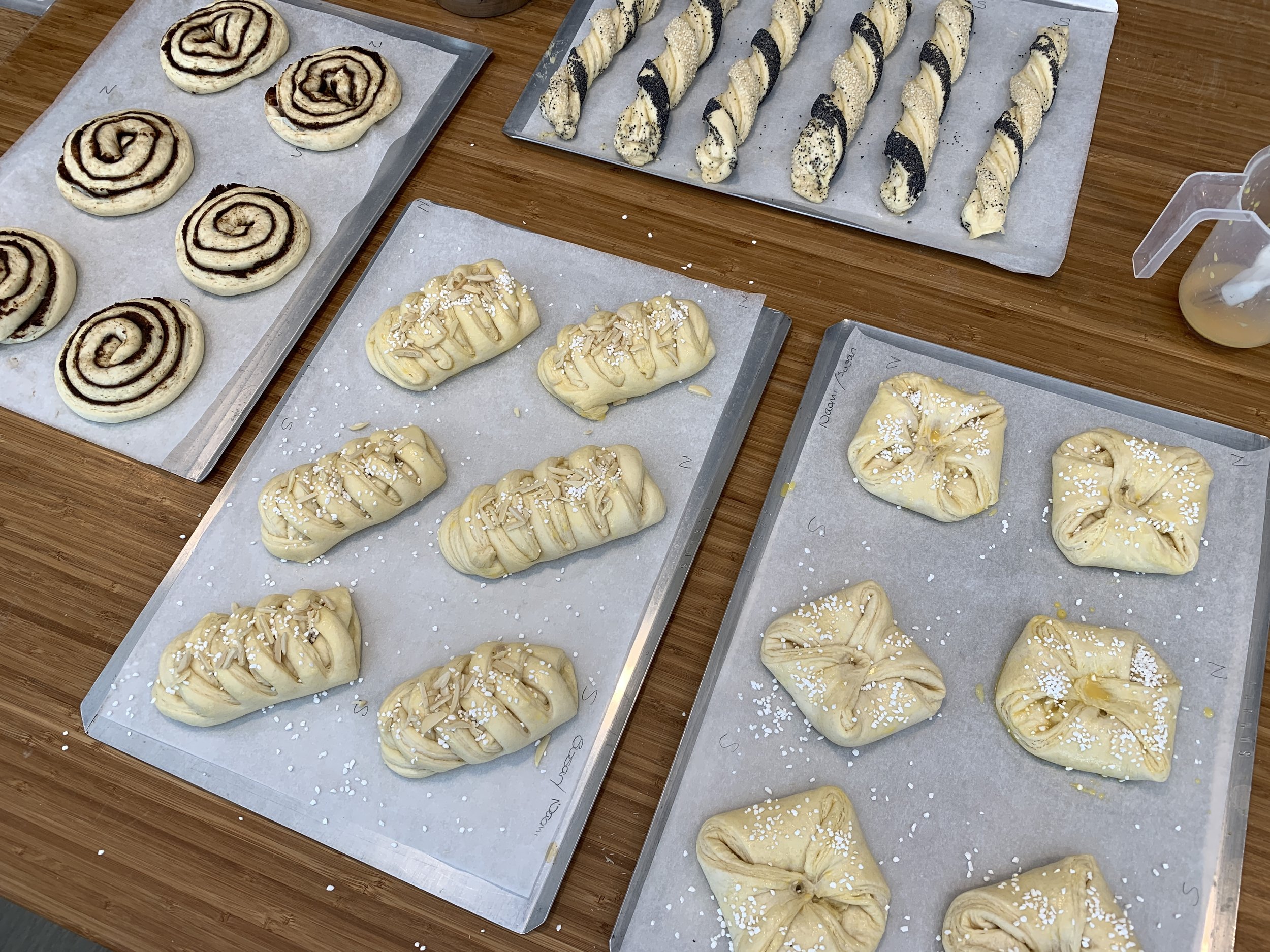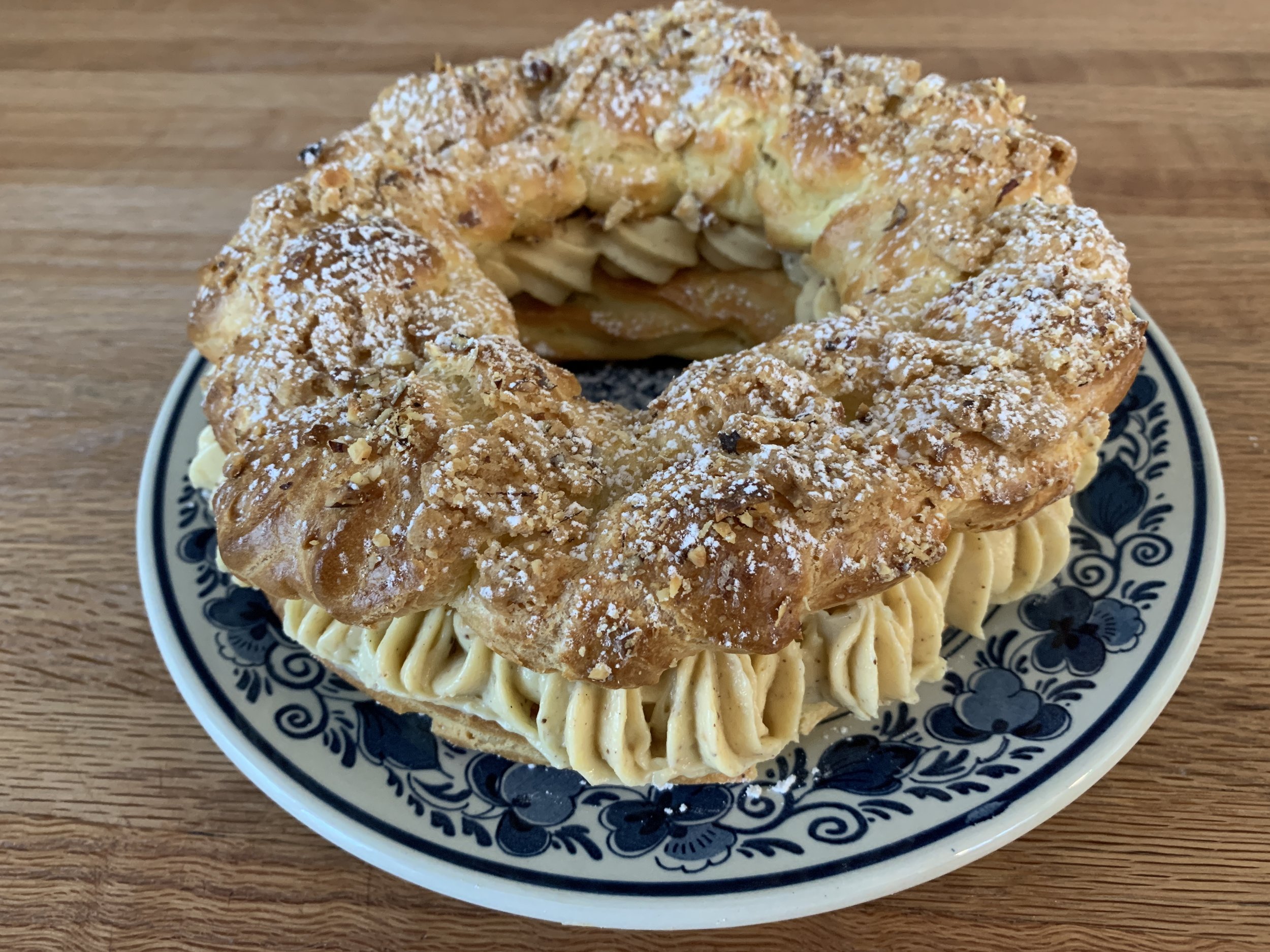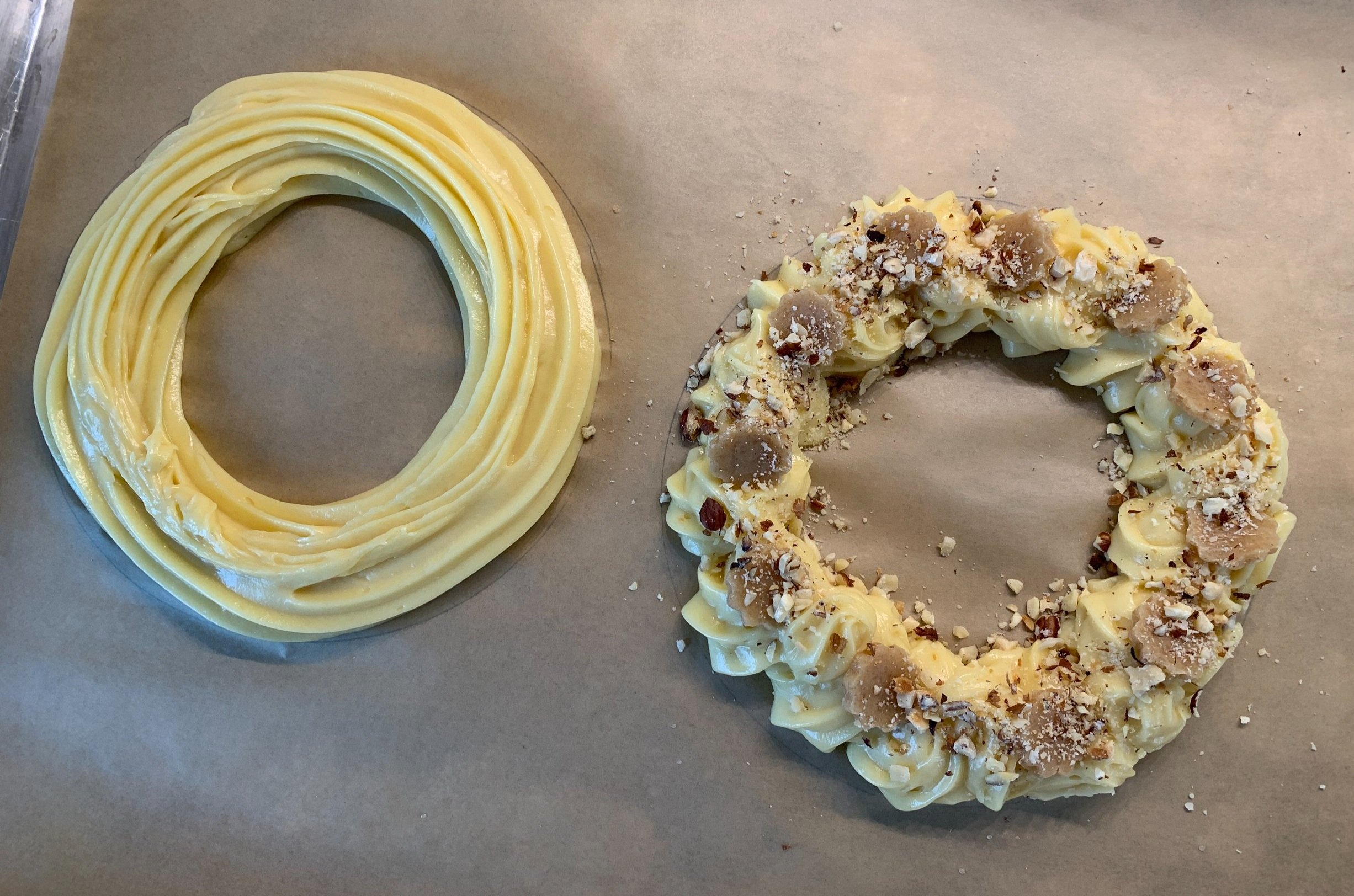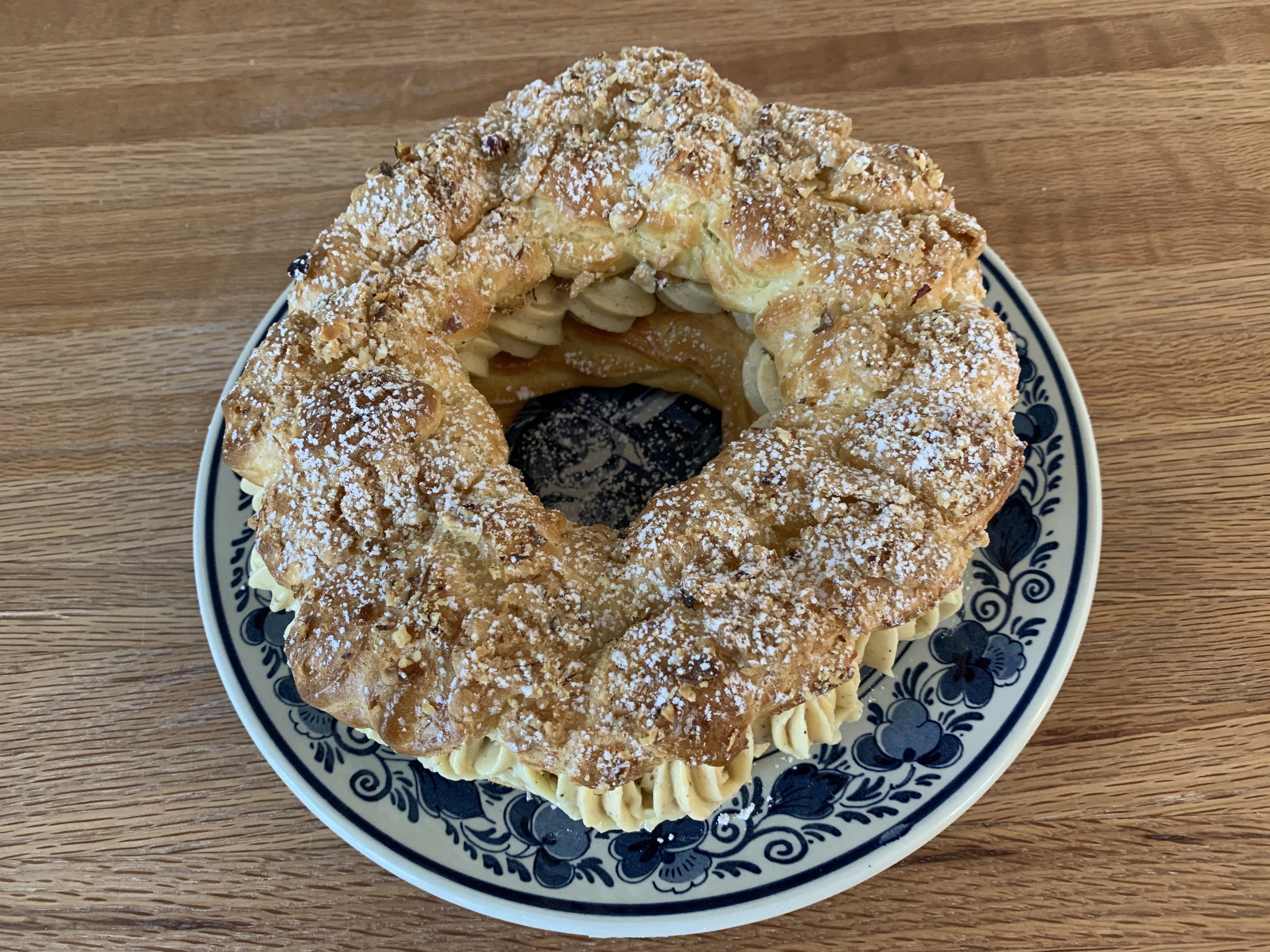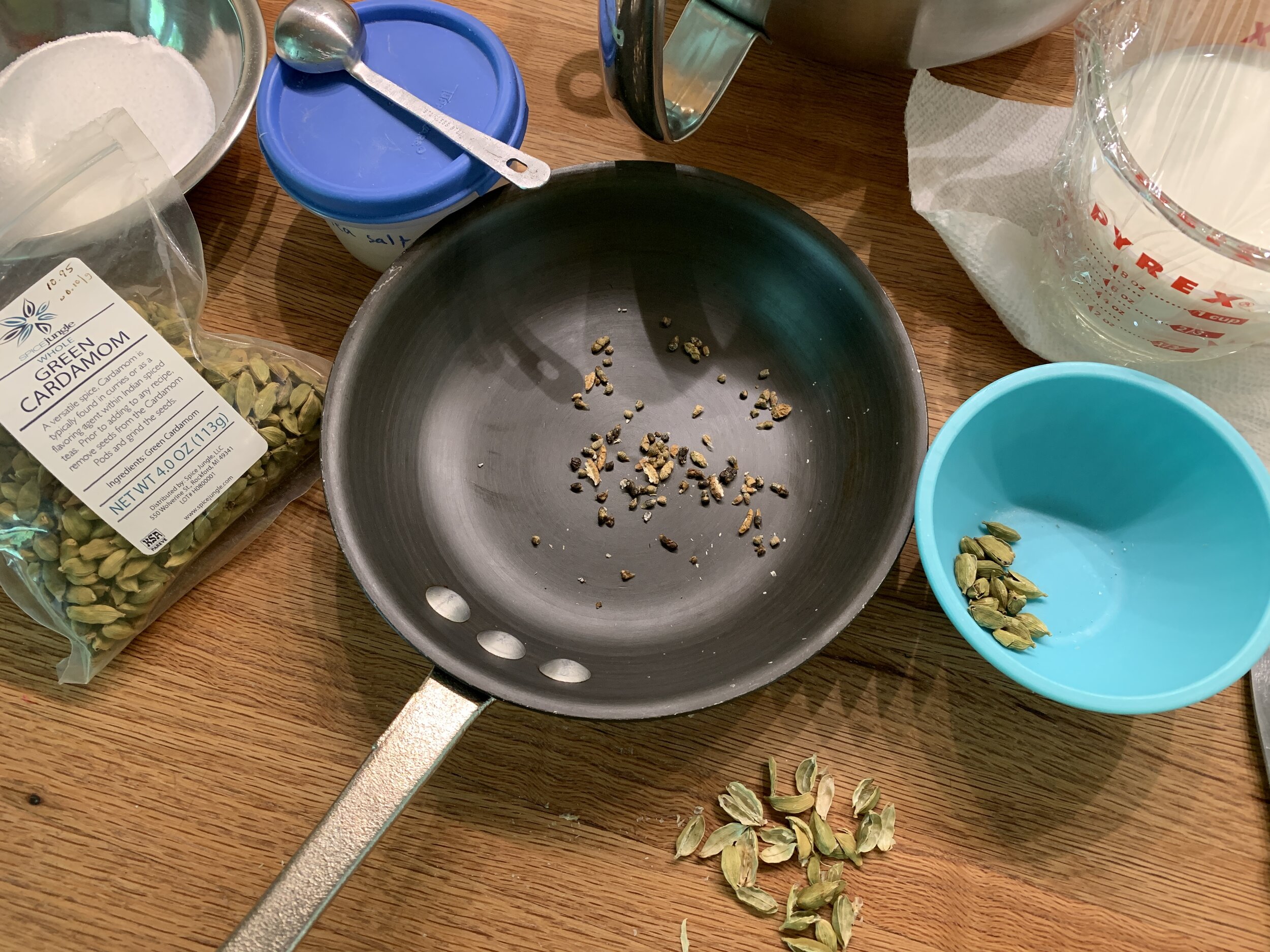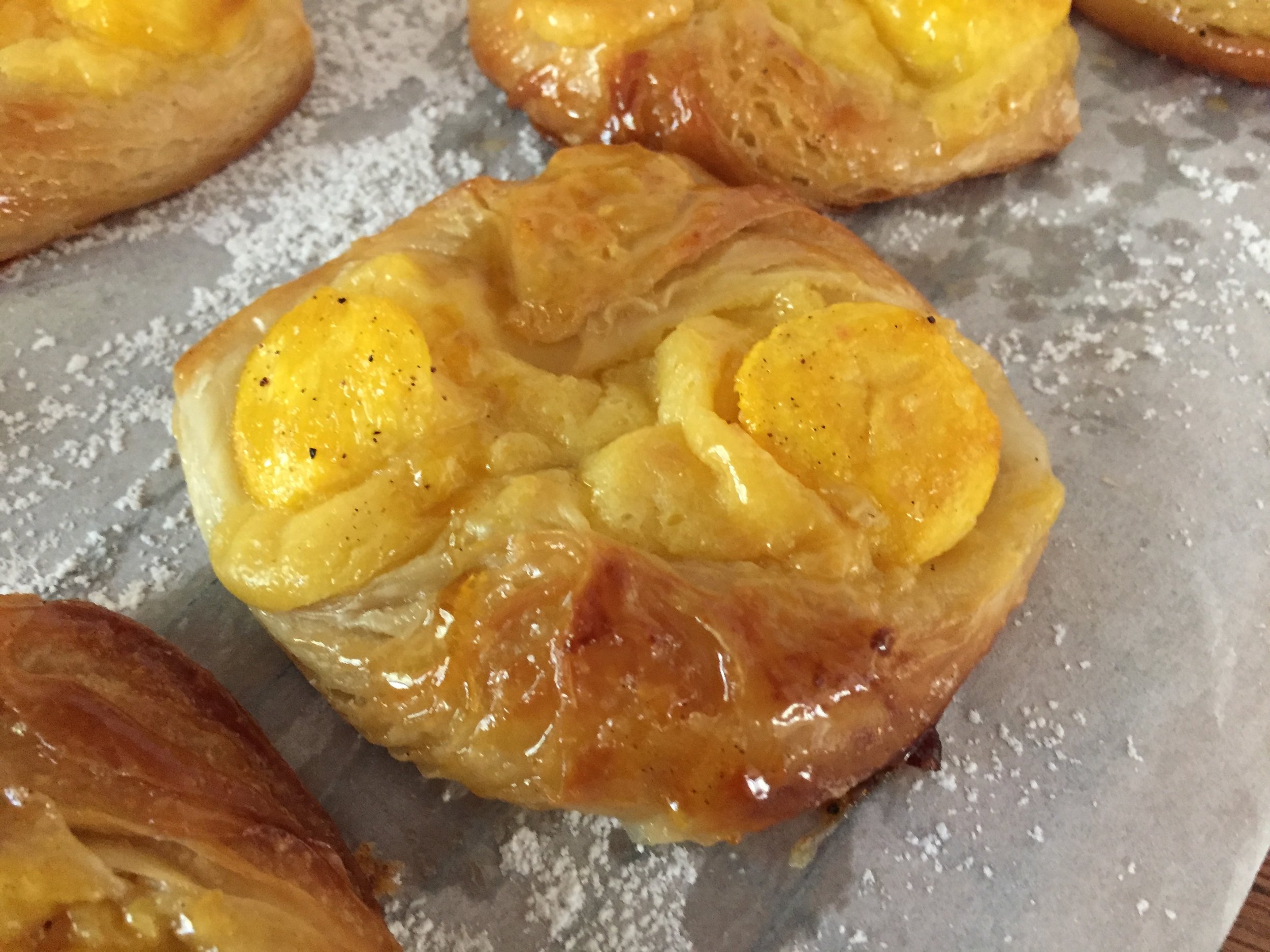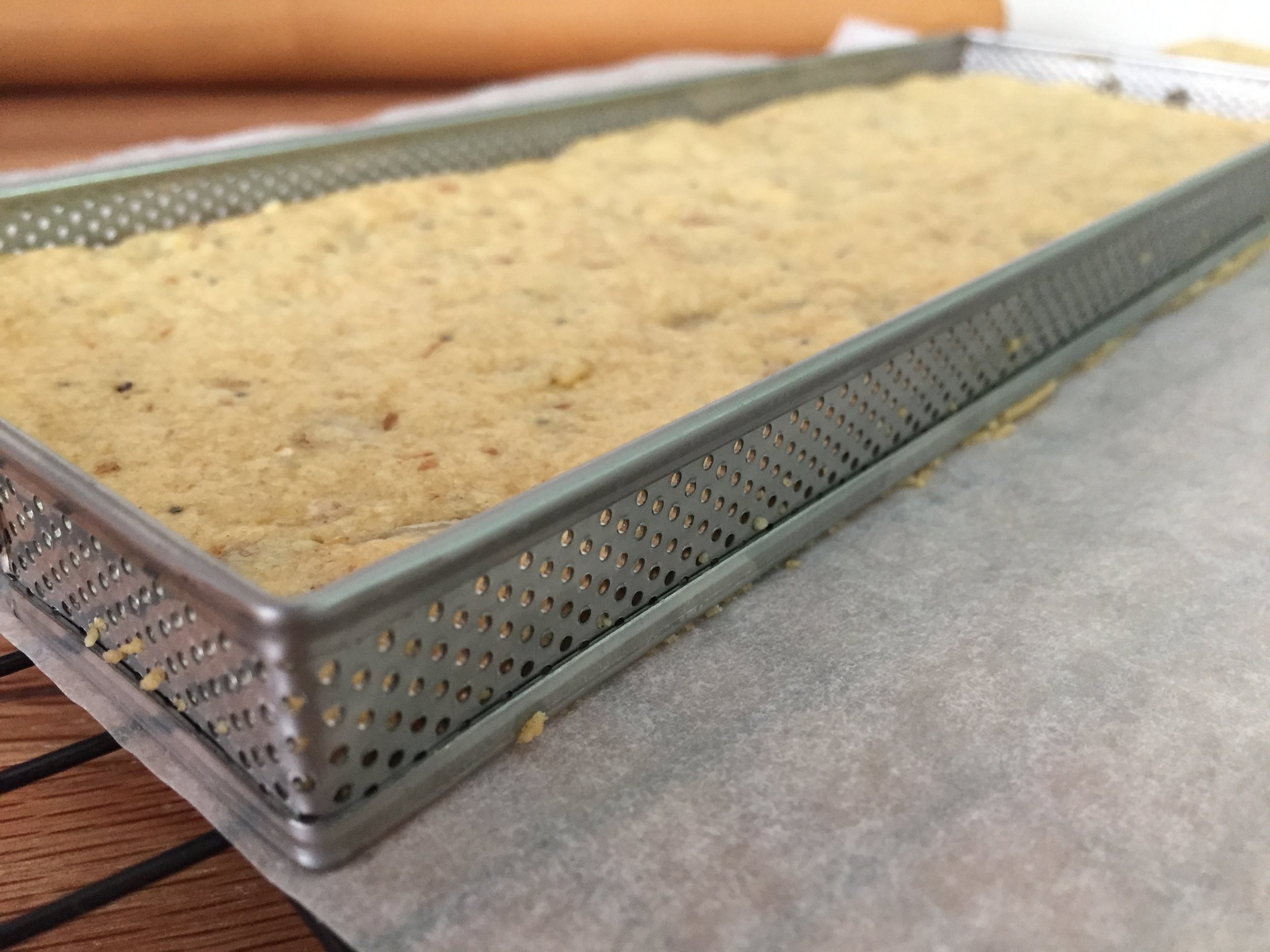Hmmmm - Gateau Basque - now just what is that all about? Well let me tell you. It's a traditional Basque butter cake baked with a pastry cream filling and/or cherry jam (for those of you who like fruit in your desserts). It's kind of a cross between a cake and a tart and leans toward either of those depending on which recipe you use. More about that later.
Gateau Basque (let's call it GB) was one of the first cakes we made in the basic pastry curriculum at LCB in Paris. We were told then that one can make it with pastry cream and cherries or can substitute prunes or dried apricots. As I researched it online I found pictures of many variations for this cake - some with only pastry cream, some with only cherries (black cherry jam to be precise) - including a couple of chocolate versions and one with a pink tinged (cherry? strawberry? raspberry?) pastry cream filling. Let's hear it for artistic license, eh?
Below are the individual versions of GB that I made in my pastry studio at Hope Artiste Village a couple of years ago. I used the LCB recipe from my schooling days and baked them with pastry cream and dried tart cherries that had been plumped up first in hot water ( you could use cherry juice or liqueur if you wanted).
When I was reading up on the topic back then, I remember one source (can't for the life of me tell you where I found it!) advising that a good GB should be one in which the interior pastry cream layer becomes one with the dough during baking, sort of melding into it without being identifiable as a distinct layer. That's how the above LCB versions came out, and they were tasty! Buttery, crumbly, yet cake-like, not too sweet and oh-so-good with a cup of coffee or tea.
Now, as I review the topic again, I see many photos of the sliced cake showing very distinct pastry cream/fruit layers. That seems to be the way of it.
On to the task at hand.
This time I opted to try Christophe Felder's GB recipe from his book
Patisserie!. His
leçons focus on a particular component e.g. a type of dough or
pâte and carry that through to a finished product. I like that.
As I compare his recipe with LCB's there are several variations - his has a bit less butter, less sugar, fewer eggs and calls for almond flour along with all purpose flour.
He treats this dough like a tart dough, whereas the LCB recipe uses it more as a batter (and a very thick one at that).
 |
| les ingredients |
For the
pâte à gateau basque place 175 gm soft butter, 125 gm sugar, 85 gm almond flour and the zest of one lemon in a mixing bowl. Blend it by hand with a spatula or in the mixer with the paddle attachment on low speed. Then blend in one egg yolk plus 25 gm of beaten egg (1/2 an egg) followed by 225 gm all purpose flour and a pinch of salt.
I mixed it until it looked like large curds (as seen below),
then brought it together by hand.
Wrap it up and into the fridge it goes for a couple of hours.
In the meantime I made a batch of basic pastry cream in the usual fashion using 250 ml whole milk, 3 egg yolks, 45 gm sugar, 20 gm cornstarch and a tablespoon of hazelnut liqueur (in place of the recommended rum) whisked in after the cooking process.
 |
| crème pâtissière |
I like to cool the pastry cream on a plastic lined quarter sheet pan, folding the plastic over it to eliminate air and pop it in the fridge. It doesn't take long.
Next up - the cherries. Since I preferred not having a jar of leftover cherry jam (Christophe calls for 150 gm
confiture de griottes) on my hands, I roasted 150 gm of frozen cherries with a couple of tablespoons of raw sugar and a pinch of salt at 450º for about 8 minutes (watch carefully so they don't burn!). Then I added a couple tablespoons of hazelnut liqueur and gave them another 5 minutes in the oven.
 |
| before roasting |
 |
| after roasting |
I poured the cherries onto a clean flat pan and let them cool to room temp which allowed the syrup to thicken up a bit.
Now for the assembly.
Remove the chilled
pâte from the fridge and divide it in two. Butter an 8-9" round pan, line the bottom with parchment and butter and flour that.
 |
| my nod to Mickey Mouse |
Roll out each of the pieces of dough slightly larger than the diameter of your pan.
Trim off the excess and place one round into the prepared pan. Roll the scraps into a long snake and place it around the periphery of the pan, gently pressing it in to adhere it to the sides of the pan and the bottom dough layer.
I piped a layer of pastry cream over the bottom, topped it with the cherries and finished off the cream over the cherries.
Note - you can put the cherries in first and pipe the cream over them, or pipe all the cream in and top with the cherries - it doesn't really matter.
Take the second round of dough and place it over the filling. Tuck it in nicely around the edges and remove the excess.
I used most of the dough to create a nice rim all the way around, leaving very few scraps.
 |
| almost ready for the oven |
Give the surface a brush with egg wash, pop it in the fridge for a few minutes, give a second coat of egg wash and create cross-hatch marks with a fork.
At LCB we were told that there are a variety of patterns one can use. As I understand it, in true Basque fashion, certain surface markings indicate what type of filling is inside i.e. cream only or jam only. I basically winged it with mine.
Bake in a 350º oven for approximately 40 minutes until golden.
Once cooled a bit, turn it out of the pan and let cool on a wire rack.
Whew!
I served this for dessert after a traditional Indonesian
nasi goreng feast prepared by sister-in-law Dorothy's long time friend Jeanette from Toronto. And what a feast it was!
What you see below are all of the cold portions of the meal which accompanied warm dishes of Indonesian fried rice, pork satay, coconut shrimp, beef with onions, chicken and various sauces.
My apologies Jeanette - I can't do the descriptions justice, but it was one delicious repast!
I felt almost too full for dessert, but the group was ready and willing so away we went.
Topped with
crème chantilly and toasted almonds this was a delightful surprise. While being in no way related to Indonesian food, it still seemed to fit the bill (more like a tart than a cake, not too sweet, buttery and cookie like) as a perfect ending to a meal full of flavorful contrasts.
The pastry cream/cherry layers remained distinct and certainly didn't detract from the overall experience, but in the future I think I'll go back to the LCB recipe. In a nutshell its texture and overall flavor win out in my book.
And there you have it.


